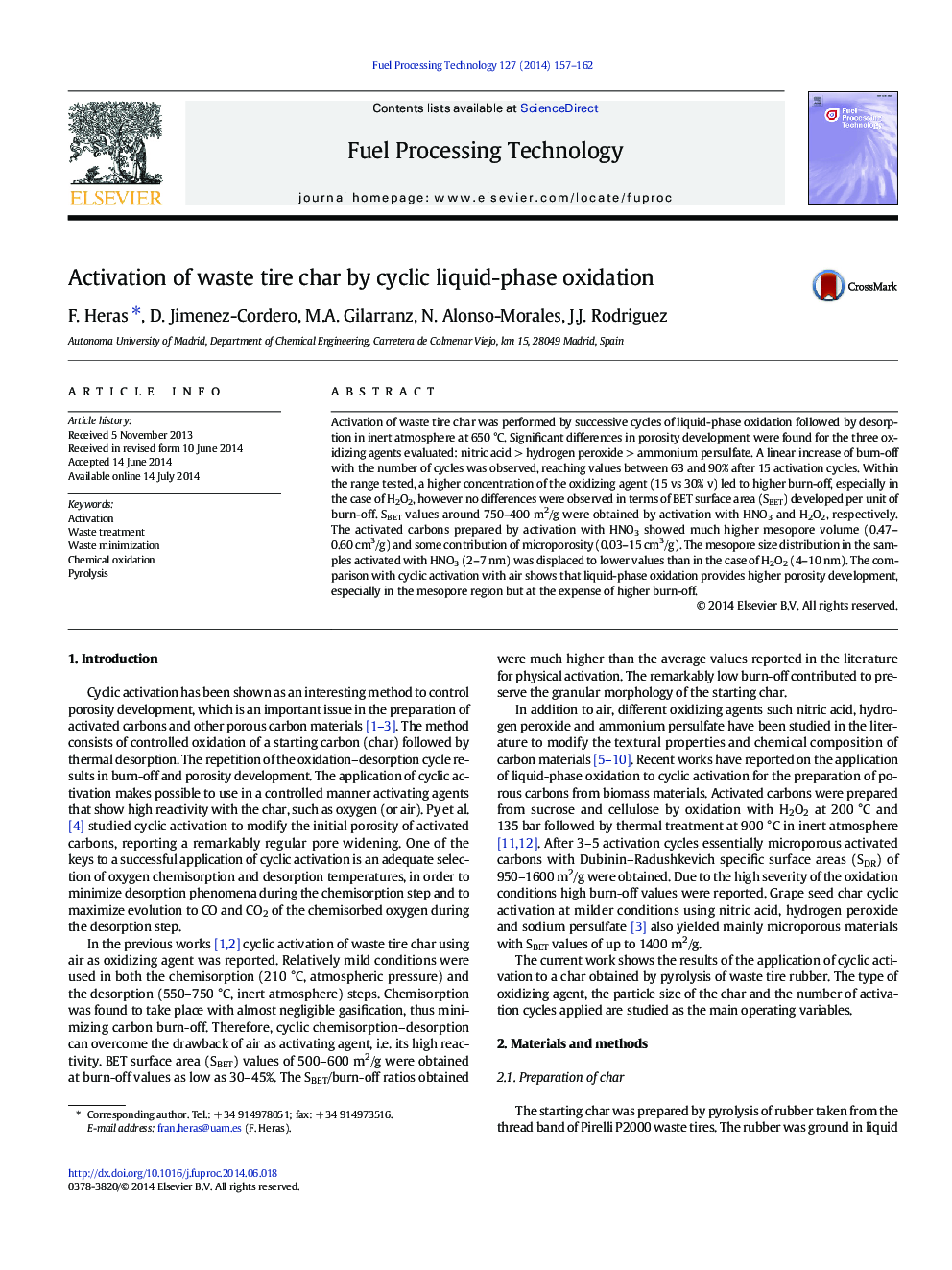| کد مقاله | کد نشریه | سال انتشار | مقاله انگلیسی | نسخه تمام متن |
|---|---|---|---|---|
| 209797 | 461683 | 2014 | 6 صفحه PDF | دانلود رایگان |
• Cyclic liquid phase oxidation–desorption has proved to be an effective activation method.
• The oxidizing agent – HNO3, H2O2 or (NH4)2S2O8 – drives porosity pattern.
• The use of HNO3 as oxidizing agent maximizes surface area development.
• 750 m2/g BET and 1150 m2/g DR surface were achieved.
Activation of waste tire char was performed by successive cycles of liquid-phase oxidation followed by desorption in inert atmosphere at 650 °C. Significant differences in porosity development were found for the three oxidizing agents evaluated: nitric acid > hydrogen peroxide > ammonium persulfate. A linear increase of burn-off with the number of cycles was observed, reaching values between 63 and 90% after 15 activation cycles. Within the range tested, a higher concentration of the oxidizing agent (15 vs 30% v) led to higher burn-off, especially in the case of H2O2, however no differences were observed in terms of BET surface area (SBET) developed per unit of burn-off. SBET values around 750–400 m2/g were obtained by activation with HNO3 and H2O2, respectively. The activated carbons prepared by activation with HNO3 showed much higher mesopore volume (0.47–0.60 cm3/g) and some contribution of microporosity (0.03–15 cm3/g). The mesopore size distribution in the samples activated with HNO3 (2–7 nm) was displaced to lower values than in the case of H2O2 (4–10 nm). The comparison with cyclic activation with air shows that liquid-phase oxidation provides higher porosity development, especially in the mesopore region but at the expense of higher burn-off.
Journal: Fuel Processing Technology - Volume 127, November 2014, Pages 157–162
